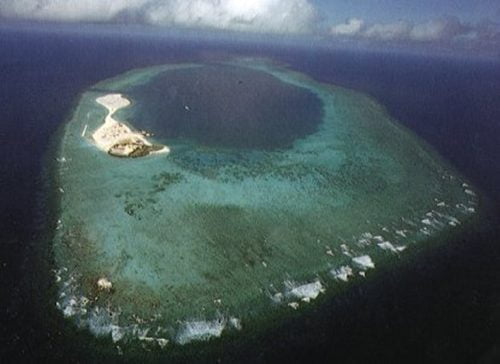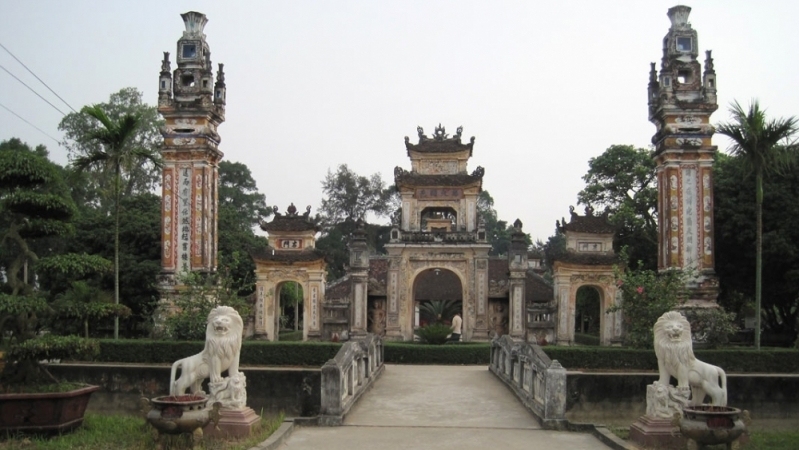Located between Vietnam and the Philippines, the Spratly Islands have no native population, yet the area is one of the most disputed regions in the world, with six countries claiming all or part of the archipelago. Largely barren, the islands, many of which are not above water all of the time, cannot sustain human life. Yet, the rich untapped potential of oil and natural gas reserves under the reefs, and their strategic maritime position has made the Spratly Island a point of contention in East Asia since the 1950s.
The first verified 'discovery' of the Spratly Islands was in 1843 when British whaling captain Richard Spratly spotted a large island. He named it after himself, as one does, and the name was eventually applied to the entire island group. Though this was the era of the British Empire, and the British were well known for claiming any piece of land that stood still, Spratly sailed on, and the English did not attempt to claim the islands. The islands were mostly left alone until the Japanese built an army base on the largest island during WWII.
The Spratly Islands are comprised of various bits of land that sometimes are, and sometimes aren't above water. There are more than 100 of these reefs, shoals, atolls, and islets, with Spratly Island itself being the largest. Though there is no indigenous population, approximately 45 of the islands are occupied by military presence from one of the six countries that lay claim to the area.
While there is sparse vegetation and very little wildlife, there is a huge reserve of untapped natural gas and oil under the reefs. These resources are very useful to the rapidly developing nations that claim the area, especially to China, who uses about 12% of the world's oil--second only to the United States in world usage.
In addition to gas and oil, the Spratly Islands are also rich in fish and other sea life--a major component of the southeast Asian diet. Being able to fish in those waters is very important to the livelihood of the people closest to the area, and having control of those waters lends an enormous economic advantage.
However, fish rights aren't the only thing that makes the Spratly Islands strategic. Their location in the South China sea not only makes them an excellent military outpost to launch attacks in Southeast Asia, but it also lends control of one of the largest shipping routes in the world. Any cargo boat that sails to Asia has to go through the South China Sea, and whoever controls the Spratly Islands exerts significant influence over trade in the region.
The Spratlys are claimed by six nations--China, Taiwan, Vietnam, Malaysia, Brunei, and the Philippines. While the Spratlys are closest to Vietnam, Malaysia, and the Philippines, Taiwan retains the longest military presence, and China is the most militant about populating the area, going as far as to build artificial islands to station military forces on.
Delving into the basis of territorial claims on the Spratlys, many countries share similar justifications for why the Spratlys should belong to them. The claims separate into about three camps, with all of them boiling down to the same reasoning that five year olds use to fight over toys. These claims are: I had it first, I have it now, and But it's close to me.
All of these countries make strong claims to certain features of the Spratly Islands, and peace would certainly be conceivable if China, Taiwan, and Vietnam weren't attempting to claim the entire archipelago. As it stands, the Spratly Islands is the epicenter of a cold and sporadic conflict. None of the claimant countries make an active effort to maintain the claims on the region, and Malaysian and Filipino fishermen make use of the waters surrounding the archipelago. It seems unlikely that any resolution between the six countries will be reached soon, and so the Spratly Islands remain a volatile, and dangerous region.
¹The Taiwanese have been lumped in with the Chinese here, as Taiwan was administratively a part of mainland China until 1949. The Taiwanese historical claims are the same as the Chinese historical claims.
Sources
The Spratly Islands Dispute: International Law, Conflicting Claims, and Alternative Frameworks
For Dispute Resolution by Robin Gonzalez
Why is the South China Sea Contentious?
The South China Sea: the Spratly Islands Disputes
Making Sense of the South China Sea Dispute
Spratly Islands
Spratly Islands: Reefs, Shoals, Atolls, and Islets
 |
| Aerial view of an atoll in the archipelago. |
The Spratly Islands are comprised of various bits of land that sometimes are, and sometimes aren't above water. There are more than 100 of these reefs, shoals, atolls, and islets, with Spratly Island itself being the largest. Though there is no indigenous population, approximately 45 of the islands are occupied by military presence from one of the six countries that lay claim to the area.
While there is sparse vegetation and very little wildlife, there is a huge reserve of untapped natural gas and oil under the reefs. These resources are very useful to the rapidly developing nations that claim the area, especially to China, who uses about 12% of the world's oil--second only to the United States in world usage.
In addition to gas and oil, the Spratly Islands are also rich in fish and other sea life--a major component of the southeast Asian diet. Being able to fish in those waters is very important to the livelihood of the people closest to the area, and having control of those waters lends an enormous economic advantage.
However, fish rights aren't the only thing that makes the Spratly Islands strategic. Their location in the South China sea not only makes them an excellent military outpost to launch attacks in Southeast Asia, but it also lends control of one of the largest shipping routes in the world. Any cargo boat that sails to Asia has to go through the South China Sea, and whoever controls the Spratly Islands exerts significant influence over trade in the region.
 |
| Map of the islands and the claims exerted over them. |
Delving into the basis of territorial claims on the Spratlys, many countries share similar justifications for why the Spratlys should belong to them. The claims separate into about three camps, with all of them boiling down to the same reasoning that five year olds use to fight over toys. These claims are: I had it first, I have it now, and But it's close to me.
- I had it first.
China, Taiwan, and Vietnam all use this argument. All three countries have produced documents that 'prove' the existence of Chinese¹ and Vietnamese people living on the Spratlys hundreds of years ago. The Chinese produced records stating that Han people had settled the area in the 1600s, and the Vietnamese produced records showing that the Spratlys had been a part of several ancient Vietnamese kingdoms. However, this historical evidence is shaky at best, and due to a lack of continuous occupation of the region, an important factor in claiming sovereignty over an area, has not been accepted as grounds for a valid claim by the United Nations.
- I have it now.
While nowhere near one of the greatest military conflicts in the late twentieth century, armed conflict, and taking island features by force has been one way of securing possession of the archipelago. There have been armed skirmishes between China and Vietnam in 1974 and 1988, and between China and the Philippines in 2012. Following, and in between these skirmishes the Chinese government has established airfields and military bases on various island features. They have also gone as far as to include the Spratlys on their official maps, and give them an official place in the Hainan Province.
Taiwan has had a physical occupying force in the islands since the end of WWII, with only a brief interruption. They occupy Itu Abu, the largest island in the archipelago, and have been administering it peacefully for decades.
Malaysia, likewise, has physical garrisons on the islands, and claims twelve islands that are located on its continental shelf. Malaysia, however, is the newest claimant to the game, not taking possession of any of the islands until the 1980s.
All of these countries are operating under the idea that continuous occupation=ownership. It's the same idea that led Canada to abandon 92 in the High Arctic. It is, by far, a much stronger claim than historical precedence or international law, given that possession is 9/10ths of the law.
- But it's close to me.
Part of the United Nations Convention on the Law of the Sea states that a nation may claim up to 200 nautical miles away from their land as an exclusive economic zone. This is the law upon which Brunei hangs its claim, and a law that Malaysia and the Philippines both utilize. It is worth noting that in all three of these cases the country in question isn't claiming the entire archipelago, just a few islands, or, in the case of Brunei, a single reef.
 |
| A Chinese Military Base |
All of these countries make strong claims to certain features of the Spratly Islands, and peace would certainly be conceivable if China, Taiwan, and Vietnam weren't attempting to claim the entire archipelago. As it stands, the Spratly Islands is the epicenter of a cold and sporadic conflict. None of the claimant countries make an active effort to maintain the claims on the region, and Malaysian and Filipino fishermen make use of the waters surrounding the archipelago. It seems unlikely that any resolution between the six countries will be reached soon, and so the Spratly Islands remain a volatile, and dangerous region.
¹The Taiwanese have been lumped in with the Chinese here, as Taiwan was administratively a part of mainland China until 1949. The Taiwanese historical claims are the same as the Chinese historical claims.
The Spratly Islands Dispute: International Law, Conflicting Claims, and Alternative Frameworks
For Dispute Resolution by Robin Gonzalez
Why is the South China Sea Contentious?
The South China Sea: the Spratly Islands Disputes
Making Sense of the South China Sea Dispute
Spratly Islands
Spratly Islands: Reefs, Shoals, Atolls, and Islets


